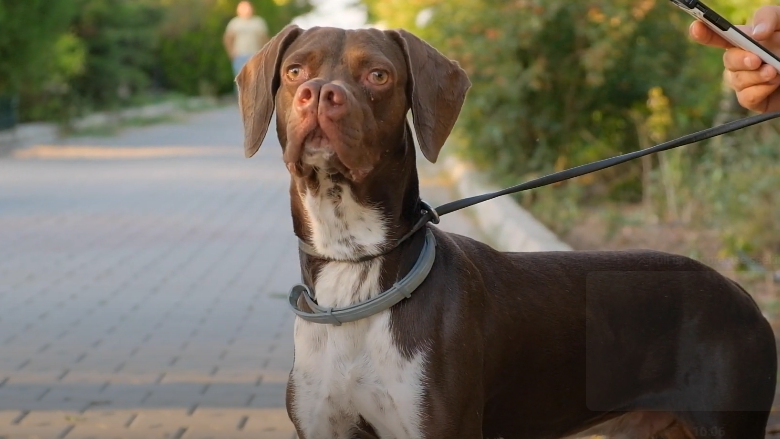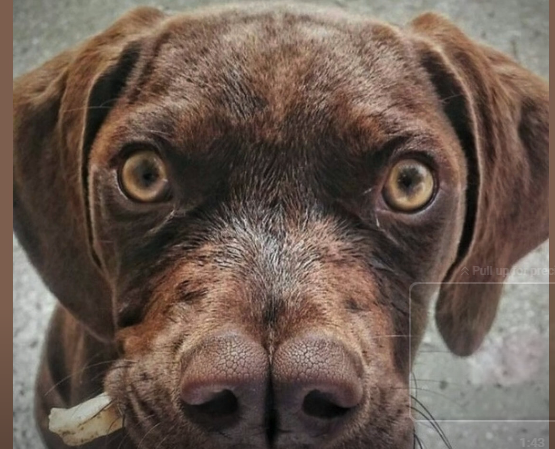The Catalburun, a unique dog breed that hails from Turkey, is renowned for its striking split nose and exceptional hunting abilities. As one of the rarest dogs in the world, the Catalburun has garnered attention from dog enthusiasts and experts alike. This article will delve into the distinct characteristics, care requirements, and training needs of the Catalburun, shedding light on why it is a breed worth knowing about.

What is the Catalburun and Why is it Considered a Rare Breed?
What Makes the Catalburun Unique?
The Catalburun stands out primarily due to its remarkable split nose, which sets it apart from other breeds. This double nose is not merely an aesthetic feature; it enhances the dog’s sense of smell, making it an exceptional hunting companion. The breed is native to Turkey, specifically the region of Catalburun, where it is often used as a hunting dog for tracking and retrieving game such as partridges. The Catalburun is recognized for its loyalty and strong bond with its owner, making it an ideal hunting partner as well as a devoted pet.
Where Did the Catalburun Originate?
The origin of the Catalburun is deeply rooted in Turkey, where it has been bred for centuries for its hunting prowess. This breed is often referred to as a Turkish pointer or hound, showcasing its functionality and purpose. As one of the rarest dogs outside of Turkey, the Catalburun’s lineage can be traced back to traditional hunting practices. The breed has evolved in the rugged terrains of Turkey, adapting to the demands of hunting and the environment around it. Their history as hunting dogs solidifies their place in the canine world, and their rarity adds to their allure.
How Does the Split Nose Affect the Breed?
The split nose of the Catalburun is not just a quirky trait; it plays a significant role in its capabilities as a hunting dog. This unique anatomical feature enhances the dog’s olfactory senses, allowing it to track prey with remarkable efficiency. The dual nostrils enable the Catalburun to differentiate scents more effectively, making it a prized companion for partridge hunters and other game enthusiasts. However, this distinctive physical trait can also lead to certain health considerations, such as susceptibility to nasal infections, which necessitate regular veterinary check-ups to ensure the breed remains healthy and vibrant.

What is the Appearance and Temperament of the Catalburun?
What Does a Typical Catalburun Look Like?
A typical Catalburun is a medium-sized dog with a well-proportioned body, muscular frame, and long legs that reflect its agility and stamina as a hunting dog. The most striking feature is undoubtedly its split nose, which gives it a unique facial appearance. The coat of the Catalburun is short and dense, often coming in a variety of colors, including liver and white or black and white combinations. Their ears are long and hang down, enhancing their hound-like appearance and adding to their charm. The breed’s expression is friendly and intelligent, indicating their loyalty and willingness to work closely with their human companions.
What is the Temperament of the Catalburun?
The temperament of the Catalburun is one of its most appealing traits. These dogs are known for being loyal, affectionate, and highly trainable. They possess an innate desire to please their owners, making them eager learners and good candidates for obedience training. Their hunting background means they are also energetic and require regular exercise to maintain their physical and mental health. While Catalburuns are generally friendly with people, they can be reserved with strangers, which makes them excellent watchdogs. Their intelligence and sensitivity mean they thrive in environments where they can bond with their family and receive consistent training.
Are Catalburuns Good Family Pets?
Catalburuns can make good family pets, provided that their exercise needs are met. They are known to be gentle and patient with children, often forming strong bonds with them. However, potential owners should consider their high energy levels and need for regular outdoor activity. Catalburuns do best in homes with ample space for them to run and play, ideally with a secure fence to allow for safe outdoor exploration. While they can adapt to apartment living, it is essential to ensure they receive daily walks and exercise to prevent boredom and potential behavioral issues.
How to Care for a Catalburun: Grooming and Exercise Needs?
What Grooming Requirements Does a Catalburun Have?
Grooming a Catalburun is relatively straightforward due to their short coat, which requires minimal maintenance. Regular brushing will help to remove loose hair and keep their skin healthy. Bathing should be done as needed, particularly if the dog has been out hunting or playing in muddy conditions. Care should be taken to check their ears regularly, as the long ears can trap moisture and debris, potentially leading to infections. Nail trimming is also essential to prevent damage to their paws and ensure their comfort while walking or running.
How Much Exercise Does a Catalburun Need?
As a breed originally developed for hunting, the Catalburun has significant exercise needs. They require at least an hour of vigorous activity each day to stay healthy and happy. This can include long walks, runs, and play sessions in a secure outdoor area. Engaging in activities such as agility training or scent work can also provide mental stimulation, keeping the Catalburun alert and engaged. Without adequate exercise, they may become bored or destructive, so it is crucial for owners to devote time to meet their exercise requirements.
Are There Special Care Tips for Catalburuns?
Special care for Catalburuns involves being attentive to their unique health needs, particularly concerning their split nose. Regular veterinary check-ups can help prevent potential health issues, including respiratory infections. Additionally, ensuring proper nutrition and maintaining a healthy weight is essential, given their active lifestyle. Training and socialization from a young age will also help mitigate any behavioral issues and promote a well-adjusted adult dog. Owners should be prepared to invest time into training and exercise to ensure a fulfilling life for their Catalburun.
What Health Issues Should You Be Aware of With Catalburuns?
What Common Health Problems Affect the Catalburun?
Catalburuns, like any breed, can be prone to certain health issues. Their unique anatomy may make them susceptible to respiratory problems and nasal infections. Additionally, they can face common canine health issues such as hip dysplasia, eye disorders, and skin allergies. It is essential for owners to monitor their dogs closely for any signs of discomfort or illness and to seek veterinary care promptly if concerns arise. Regular health screenings can help catch potential issues early, ensuring the well-being of these rare dogs.
How to Prevent Health Issues in Catalburuns?
Preventive care is vital in maintaining the health of a Catalburun. Regular veterinary visits for vaccinations, dental care, and health screenings are essential to catch any problems before they develop further. Additionally, providing a balanced diet tailored to their activity level can support their overall health. Maintaining a clean living environment and monitoring for signs of infection or discomfort can also help prevent health issues. Proper exercise and mental stimulation are equally important, contributing to the dog’s physical and emotional well-being.
What is the Lifespan of a Catalburun?
The average lifespan of a Catalburun is typically between 12 to 15 years, which is relatively healthy for a medium-sized breed. With proper care, including a balanced diet, regular exercise, and routine veterinary check-ups, many Catalburuns can lead long, fulfilling lives. Responsible breeding practices also play a crucial role in the overall health of the breed, so prospective owners should seek out reputable breeders who prioritize the health and well-being of their dogs.
Can You Train a Catalburun and What Training Methods Work Best?
How Intelligent is the Catalburun?
The Catalburun is a highly intelligent breed, known for its ability to learn commands quickly and effectively. This intelligence, coupled with their eagerness to please, makes them highly trainable. They thrive in environments where they can engage in challenging activities that stimulate their minds, such as scent work or obedience training. Their hunting background also means they have a strong instinct to track and retrieve, which can be harnessed in training to develop specific skills.
What Training Techniques Are Effective for Catalburuns?
Positive reinforcement training techniques are particularly effective with Catalburuns. Reward-based training that includes treats, praise, and playtime will encourage them to learn and obey commands. Consistency is key, as these dogs respond best to clear and predictable training routines. Socialization should begin at an early age, allowing the Catalburun to become accustomed to various environments, people, and other animals. Incorporating play into training can also enhance their learning experience while keeping them engaged and motivated.
How to Address Behavioral Issues in Catalburuns?
Addressing behavioral issues in Catalburuns requires patience and a proactive approach. If the dog exhibits signs of anxiety or destructive behavior, it is essential to identify the root cause, which may stem from lack of exercise or insufficient mental stimulation. Providing regular physical activity and engaging in interactive play can alleviate many behavioral problems. If excessive barking or other issues arise, consulting with a professional dog trainer or behaviorist can provide tailored strategies to help resolve the concerns. Early intervention and consistent training will lead to a well-adjusted Catalburun that thrives in a family environment.

Leave a Reply
You must be logged in to post a comment.